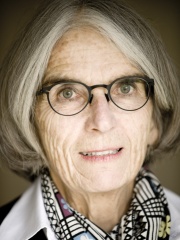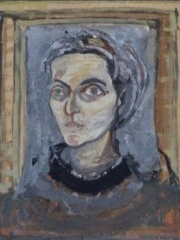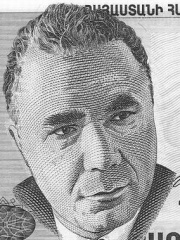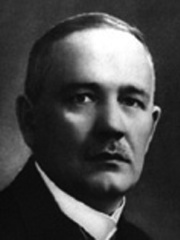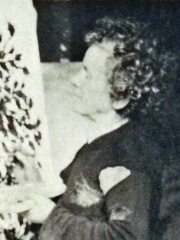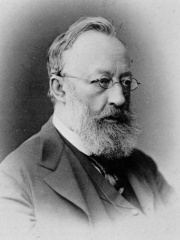WRITER
Annemarie Schwarzenbach
1908 - 1942

 Annemarie Schwarzenbach
Annemarie Schwarzenbach
Annemarie Minna Renée Schwarzenbach (23 May 1908 – 15 November 1942) was a Swiss writer, journalist and photographer. Her bisexual mother brought her up in a masculine style, and her androgynous image suited the bohemian Berlin society of the time, in which she indulged enthusiastically. Her anti-fascist campaigning forced her into exile, where she became close to the family of novelist Thomas Mann. She would live much of her life abroad as a photo-journalist, embarking on many lesbian relationships, and experiencing a growing morphine addiction. Read more on Wikipedia
Her biography is available in 27 different languages on Wikipedia (up from 26 in 2024). Annemarie Schwarzenbach is the 1,183rd most popular writer (up from 1,218th in 2024), the 124th most popular biography from Switzerland (down from 121st in 2019) and the 12th most popular Swiss Writer.
Memorability Metrics
Page views of Annemarie Schwarzenbach by language
Among WRITERS
Among writers, Annemarie Schwarzenbach ranks 1,183 out of 7,302. Before her are Khaled Hosseini, Michel Butor, Cai Yan, Sami Frashëri, Anne Rice, and Lin Yutang. After her are Donna Leon, Bernardino de Sahagún, Joanot Martorell, Zachris Topelius, Jernej Kopitar, and Monique Wittig.
Most Popular Writers in Wikipedia
Go to all RankingsKhaled Hosseini
1965 - Present
HPI: 67.06
Rank: 1,177
Michel Butor
1926 - 2016
HPI: 67.04
Rank: 1,178
Cai Yan
177 - 250
HPI: 67.04
Rank: 1,179
Sami Frashëri
1850 - 1904
HPI: 67.03
Rank: 1,180
Anne Rice
1941 - 2021
HPI: 67.03
Rank: 1,181
Lin Yutang
1895 - 1976
HPI: 67.03
Rank: 1,182
Annemarie Schwarzenbach
1908 - 1942
HPI: 67.02
Rank: 1,183
Donna Leon
1942 - Present
HPI: 67.02
Rank: 1,184
Bernardino de Sahagún
1499 - 1590
HPI: 67.01
Rank: 1,185
Joanot Martorell
1415 - 1465
HPI: 67.01
Rank: 1,186
Zachris Topelius
1818 - 1898
HPI: 67.01
Rank: 1,187
Jernej Kopitar
1780 - 1844
HPI: 67.00
Rank: 1,188
Monique Wittig
1935 - 2003
HPI: 67.00
Rank: 1,189
Contemporaries
Among people born in 1908, Annemarie Schwarzenbach ranks 61. Before her are Infante Jaime, Duke of Segovia, Günther Prien, John Kenneth Galbraith, Dmitry Ustinov, Giovanni Leone, and Maria Helena Vieira da Silva. After her are Amintore Fanfani, Valentin Glushko, Victor Ambartsumian, Masaru Ibuka, Saizo Saito, and Maria Prymachenko. Among people deceased in 1942, Annemarie Schwarzenbach ranks 43. Before her are Tina Modotti, Leopold Berchtold, Felix Weingartner, Jan Kubiš, Tamon Yamaguchi, and Louis Franchet d'Espèrey. After her are Leopold Mandić, Lauri Kristian Relander, Daniil Kharms, Séraphine Louis, Grant Wood, and Adam Czerniaków.
Others Born in 1908
Go to all RankingsInfante Jaime, Duke of Segovia
POLITICIAN
1908 - 1975
HPI: 68.06
Rank: 55
Günther Prien
MILITARY PERSONNEL
1908 - 1941
HPI: 68.03
Rank: 56
John Kenneth Galbraith
ECONOMIST
1908 - 2006
HPI: 67.93
Rank: 57
Dmitry Ustinov
POLITICIAN
1908 - 1984
HPI: 67.85
Rank: 58
Giovanni Leone
POLITICIAN
1908 - 2001
HPI: 67.23
Rank: 59
Maria Helena Vieira da Silva
PAINTER
1908 - 1992
HPI: 67.05
Rank: 60
Annemarie Schwarzenbach
WRITER
1908 - 1942
HPI: 67.02
Rank: 61
Amintore Fanfani
POLITICIAN
1908 - 1999
HPI: 66.94
Rank: 62
Valentin Glushko
ENGINEER
1908 - 1989
HPI: 66.79
Rank: 63
Victor Ambartsumian
ASTRONOMER
1908 - 1996
HPI: 66.74
Rank: 64
Masaru Ibuka
ENGINEER
1908 - 1997
HPI: 66.63
Rank: 65
Saizo Saito
SOCCER PLAYER
1908 - 2004
HPI: 66.63
Rank: 66
Maria Prymachenko
PAINTER
1908 - 1997
HPI: 66.31
Rank: 67
Others Deceased in 1942
Go to all RankingsTina Modotti
MODEL
1896 - 1942
HPI: 67.87
Rank: 37
Leopold Berchtold
POLITICIAN
1863 - 1942
HPI: 67.78
Rank: 38
Felix Weingartner
CONDUCTOR
1863 - 1942
HPI: 67.29
Rank: 39
Jan Kubiš
MILITARY PERSONNEL
1913 - 1942
HPI: 67.20
Rank: 40
Tamon Yamaguchi
MILITARY PERSONNEL
1892 - 1942
HPI: 67.16
Rank: 41
Louis Franchet d'Espèrey
MILITARY PERSONNEL
1856 - 1942
HPI: 67.03
Rank: 42
Annemarie Schwarzenbach
WRITER
1908 - 1942
HPI: 67.02
Rank: 43
Leopold Mandić
RELIGIOUS FIGURE
1866 - 1942
HPI: 66.93
Rank: 44
Lauri Kristian Relander
POLITICIAN
1883 - 1942
HPI: 66.69
Rank: 45
Daniil Kharms
WRITER
1905 - 1942
HPI: 66.65
Rank: 46
Séraphine Louis
PAINTER
1864 - 1942
HPI: 66.41
Rank: 47
Grant Wood
PAINTER
1891 - 1942
HPI: 66.29
Rank: 48
Adam Czerniaków
ENGINEER
1880 - 1942
HPI: 66.27
Rank: 49
In Switzerland
Among people born in Switzerland, Annemarie Schwarzenbach ranks 124 out of 1,015. Before her are Friedrich Miescher (1844), Albert Anker (1831), Sophie Taeuber-Arp (1889), Gottfried Keller (1819), Paul Guldin (1577), and Didier Queloz (1966). After her are Sigismond Thalberg (1812), Marthe Keller (1945), Micheline Calmy-Rey (1945), Jean-Étienne Liotard (1702), Ludwig Binswanger (1881), and Blaise Cendrars (1887).
Others born in Switzerland
Go to all RankingsFriedrich Miescher
PHYSICIAN
1844 - 1895
HPI: 67.27
Rank: 118
Albert Anker
PAINTER
1831 - 1910
HPI: 67.22
Rank: 119
Sophie Taeuber-Arp
PAINTER
1889 - 1943
HPI: 67.20
Rank: 120
Gottfried Keller
WRITER
1819 - 1890
HPI: 67.18
Rank: 121
Paul Guldin
MATHEMATICIAN
1577 - 1643
HPI: 67.10
Rank: 122
Didier Queloz
ASTRONOMER
1966 - Present
HPI: 67.02
Rank: 123
Annemarie Schwarzenbach
WRITER
1908 - 1942
HPI: 67.02
Rank: 124
Sigismond Thalberg
COMPOSER
1812 - 1871
HPI: 67.00
Rank: 125
Marthe Keller
ACTOR
1945 - Present
HPI: 66.97
Rank: 126
Micheline Calmy-Rey
POLITICIAN
1945 - Present
HPI: 66.94
Rank: 127
Jean-Étienne Liotard
PAINTER
1702 - 1789
HPI: 66.92
Rank: 128
Ludwig Binswanger
PSYCHOLOGIST
1881 - 1966
HPI: 66.82
Rank: 129
Blaise Cendrars
WRITER
1887 - 1961
HPI: 66.81
Rank: 130
Among WRITERS In Switzerland
Among writers born in Switzerland, Annemarie Schwarzenbach ranks 12. Before her are Robert Walser (1878), Max Frisch (1911), Alejo Carpentier (1904), Johann Ludwig Burckhardt (1784), Johann Kaspar Lavater (1741), and Gottfried Keller (1819). After her are Blaise Cendrars (1887), Charles-Ferdinand Ramuz (1878), Rodolphe Töpffer (1799), Hans Urs von Balthasar (1905), Alfonsina Storni (1892), and Antoine-Henri Jomini (1779).
Robert Walser
1878 - 1956
HPI: 72.59
Rank: 6
Max Frisch
1911 - 1991
HPI: 70.83
Rank: 7
Alejo Carpentier
1904 - 1980
HPI: 70.51
Rank: 8
Johann Ludwig Burckhardt
1784 - 1817
HPI: 68.82
Rank: 9
Johann Kaspar Lavater
1741 - 1801
HPI: 68.56
Rank: 10
Gottfried Keller
1819 - 1890
HPI: 67.18
Rank: 11
Annemarie Schwarzenbach
1908 - 1942
HPI: 67.02
Rank: 12
Blaise Cendrars
1887 - 1961
HPI: 66.81
Rank: 13
Charles-Ferdinand Ramuz
1878 - 1947
HPI: 66.78
Rank: 14
Rodolphe Töpffer
1799 - 1846
HPI: 66.58
Rank: 15
Hans Urs von Balthasar
1905 - 1988
HPI: 66.10
Rank: 16
Alfonsina Storni
1892 - 1938
HPI: 65.94
Rank: 17
Antoine-Henri Jomini
1779 - 1869
HPI: 65.81
Rank: 18






